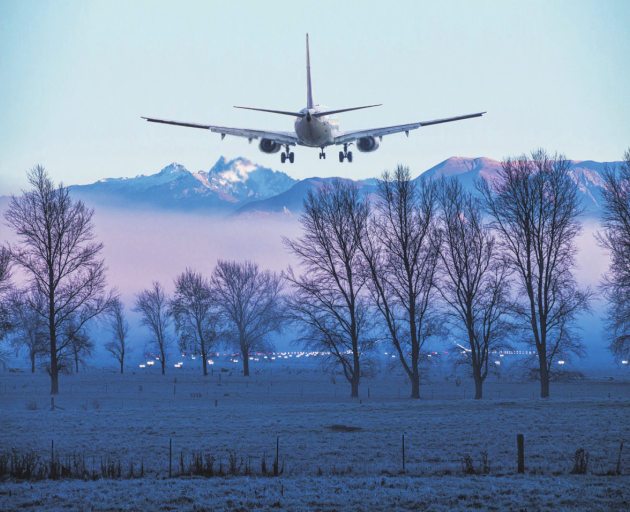
The sun is beating down on a quiet, picturesque valley surrounded by high mountains and burbling rivers.
Suddenly, a buzz in the distance rises to a roar. The whole valley quivers as a huge aircraft makes its final approach to land.
For lovers of Central Otago, particularly those who live near Tarras and along the upper reaches of the Clutha River close to Wanaka and Hawea Flat, such a scenario might actually be more like a horror film.
Despite community anxieties, Christchurch International Airport Ltd (CIAL) appears determined to pursue its ambitious, money-making flight of fancy at Tarras, where it wants to build a new international airport capable of taking wide-body jets.
The airport company — 75% owned by Christchurch City Council and its ratepayers, and one-quarter owned by the Government (taxpayers) — paid out about $45 million last year to buy 750 hectares of Tarras land for the airport, its terminal and runway.
Last week, CIAL released details of two possible alignments for a 2.2 kilometre-long runway, with provision to explore further the potential benefits of extending that to 3km in length.
While all this may sound like a pipedream, the airport company appears serious about extending its influence into Central Otago.
However, concerns are quite rightly being raised about environmental impacts and encroachment on airspace, specifically around Wanaka Airport — to say nothing of the effects of fog and also bad turbulence and crosswinds when nor’westers are blowing.
What is happening to Central Otago? Irrigation has already changed the face of the remarkable, desiccated, rocky landscape that is unique in the world.
Explosive urban growth has left parts of the region with sprawling subdivisions, congestion and traffic problems more akin to major cities. People who left Central 30 years ago would struggle to recognise the place.
And now an international airport?
Next time you watch the Tour de France, take note of the effects of industrialisation on what were otherwise beautiful valleys in a beautiful French landscape.
Why does it so often come down to money-making opportunities? Why do developers have such a say in what is happening to our irreplaceable places?
If you must develop, why not do it in already developed areas? Why in undeveloped places?
CIAL’s reprehensible and greedy proposal should really prompt a national and regional outcry for money-hungry developers to “cool it”.
It does make you wonder what might be next — maybe a container terminal and port facility in Lake Wakatipu, accessed courtesy of a canal cut through the mountains from Milford Sound?
Queenstown Lakes Mayor Jim Boult — ironically a former chief executive of CIAL — is deadset against the airport proposal. He is “dismayed” that CIAL is progressing its plan when the community has made it clear it does not want long-haul, wide-body aircraft flying in.
There have been desultory efforts to converse between the Christchurch City Council and Queenstown Lakes District Council, but Christchurch Mayor Lianne Dalziel has distanced herself.
Mr Boult has labelled the plan “predatory activity” attacking the value of Queenstown Airport and has questioned whether it is the role of territorial authorities to compete commercially.
Unfortunately this is an unattractive by-product of councils owning businesses through holding companies. It makes it difficult for councillors on the boards of holding companies to balance the twin obligation of looking after the best interests of the public while making the best commercial decisions.
So can the Government, which owns 25% of CIAL, do anything to rein it in? The Minister for the Environment has call-in powers over plans which have national significance, which means the planning process can go before a special board or the Environment Court rather than through a council hearing process.
The minister can also lodge a submission or get involved in any appeals.
Do we really need a new international airport in the middle of this wonderful, but shrinking, gem of a region? In a world where climate change and Covid-19 repercussions are seriously putting a crimp in aviation, is this a wise move?
We have enough airports. It’s time to leave Central Otago alone.












